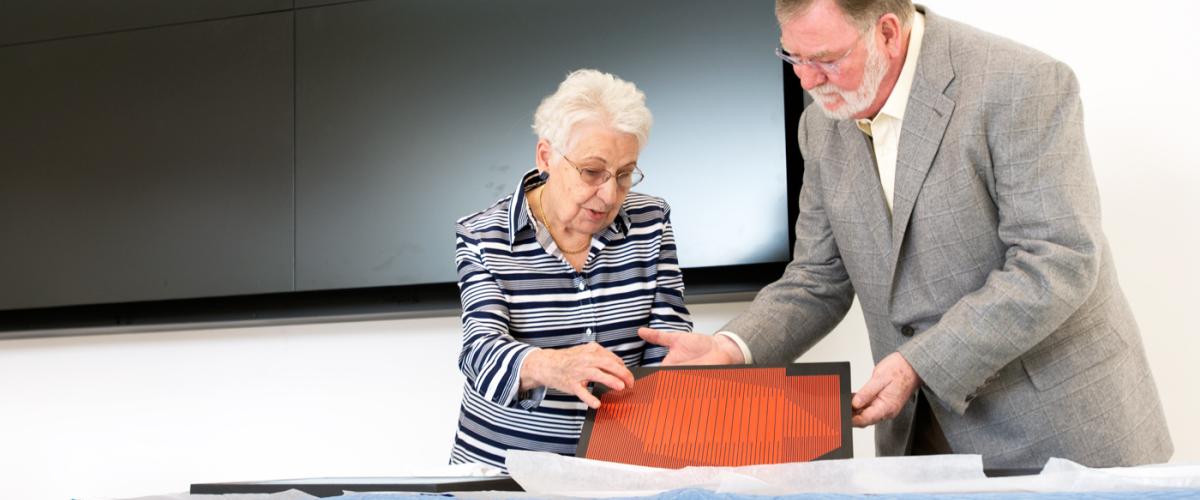 The transition from high school to college is a notoriously stressful one that can trigger a range of mental health concerns, such as anxiety, depression and substance abuse. Eating disorders, too, are becoming more prevalent among teens and college-aged students, and the rate of new cases of eating disorders overall has been increasing since 1950, according to the National Eating Disorder Association (NEDA).
“Transition of any kind—especially from high school to college—is very stressful,” said Eileen Anderson-Fye, the Robson Assistant Professor of Anthropology who researches eating disorders and body image. “When you’re going from a nuclear family to residential college, your daily routines all have to be changed. … Then there’s the disruption and having to re-form social networks, as well as the change in context that can stress identity formation. You have to refigure out who you are, who is your peer network and what are your daily routines, and that is very hard.”
To “cope” with such stressors, both men and women may develop eating disorders, such as anorexia nervosa, bulimia nervosa and binge eating. But disordered eating habits can vary and, according to Eleanor Davidson, director of the University Health Service, can be characterized by:
The transition from high school to college is a notoriously stressful one that can trigger a range of mental health concerns, such as anxiety, depression and substance abuse. Eating disorders, too, are becoming more prevalent among teens and college-aged students, and the rate of new cases of eating disorders overall has been increasing since 1950, according to the National Eating Disorder Association (NEDA).
“Transition of any kind—especially from high school to college—is very stressful,” said Eileen Anderson-Fye, the Robson Assistant Professor of Anthropology who researches eating disorders and body image. “When you’re going from a nuclear family to residential college, your daily routines all have to be changed. … Then there’s the disruption and having to re-form social networks, as well as the change in context that can stress identity formation. You have to refigure out who you are, who is your peer network and what are your daily routines, and that is very hard.”
To “cope” with such stressors, both men and women may develop eating disorders, such as anorexia nervosa, bulimia nervosa and binge eating. But disordered eating habits can vary and, according to Eleanor Davidson, director of the University Health Service, can be characterized by:
- Limiting calorie or fat intake
- Limiting quantity of food
- Binging on food
- Self-induced vomiting
- Over exercising
- Inappropriate use of diuretics, diet pills or laxatives
National Eating Disorders Awareness Week
In recognition of the seriousness of the issue, NEDA sponsors the National Eating Disorders Awareness Week Feb. 23 to March 1. Tonight, Cleveland’s Terminal Tower—along with New York City’s Empire State Building—will be lit in NEDA’s colors (blue and green) from 7 p.m. to midnight; the Terminal Tower also was lit this morning from 4 to 7 a.m. Lana Kasunic, coordinator of marketing and special projects in Alumni Relations, is helping spread the word about awareness week through projects such as the Terminal Tower lighting. Kasunic suffered from an eating disorder for seven years. “After so many years, that wears on you,” she said. “Every single decision I made—from food to friendships—was based on what's best for my eating disorder. I felt trapped because this monster consumed every single part of my life and at the same time I had to do everything I could to hide it.” Kasunic found support through resources such as NEDA. There, she said, they focus heavily on the word “hope.” “Hope may be immaterial, but I know from experience that we need it,” she said. “There is always hope and recovery is possible.” Now, Kasunic serves as a NEDA Navigator, a trained volunteer who helps lead people through the diagnosis and process of seeking help for eating disorders.Support at CWRU
Beyond national organizations like NEDA, there are resources available on campus for individuals with eating disorders—or for concerned friends or family members. Case Western Reserve’s support services for individuals with eating disorders include a multidisciplinary team in the University Health Service (UHS). The team is led by Warren, who also directs the Cleveland Center for Eating Disorders, an outpatient treatment center in Beachwood. The team also includes psychologist Sophia Hayes, dietitian Brenda Walsh and physicians Sara Lee and Maria Hunter, among other professionals. In addition, University Counseling Services (UCS) provides individual consultation, assessment, counseling and referrals for students who struggle with unhealthy eating patterns, said Jes Sellers, a psychologist and UCS director. “When students seek care through the UCS, our counselors work with each one to build a treatment approach that will work for them,” he said. “We also offer a collaborative effort with the University Health Service, where UHS health care professionals and counseling staff work together to assist students with their weight and nutrition goals.” Sellers also noted that, in cases when more intensive care is needed, counseling and health services work together to help students find proper in- or outpatient care. All on-campus visits to health and counseling services are free to registered students. In addition, the student medical plan includes coverage for eating disorder diagnosis and treatment.Who Gets Eating Disorders
Though anyone—male or female—can develop an eating disorder, the condition often is more prevalent in highly competitive environments or those in which some facet of success is based on appearance, Anderson-Fye said. As one area of study that typically is known for its emphasis on body type, faculty members in the Department of Dance are cognizant of the effects. The department has a Dancer Wellness Program, which is specifically geared toward the health and wellness needs of dancers, said professor Gary Galbraith. As part of the program, dance students take a variety of courses on topics of wellness, including nutrition and psychological issues as they pertain to dancers. In a seminar this week, Galbraith brought in Shannon Sterne, a dietitian and assistant professor of dance, to discuss nutrition; UCS’ Hayes will attend class this week to discuss body image and eating disorders. Anderson-Fye is quick to note, however, that it is not just the “stereotypical” dancers and gymnasts who can develop eating disorders. In fact, she said, one of the fastest-increasing problems globally is male body image. “College is a prime age for the drive for muscularity,” she said. “Though male body-image disorders are different from eating disorders, they are dramatically on the rise. And if you look at the gender breakdown of who has eating disorders, men’s proportion is increasing significantly.” Anderson-Fye teaches courses on the Anthropology of Body Image and Anthropology of Obesity, and in every class, male students at Case Western Reserve discuss the prevalence of male body-image concerns. “There is a lot of hidden distress that goes on because men are feeling bad about their bodies, and it’s shameful for them to talk about because it’s supposed to be a ‘women’s problem,’” she said. On the Spartan wrestling team, the pressure to drop pounds to meet a certain weight class exists, but coaches educate student-athletes on the dangers of unhealthy weight-loss practices that have long been prevalent in the sport. Though head coach Mark Hawald acknowledges the team does encourage its athletes to be “rather lean,” he urges athletes to take a long-term approach to weight loss and promotes “lifestyle changes” rather than dieting. He discusses the importance of actually eating multiple smaller meals throughout the day, and putting a plan in place well in advance for wrestlers to meet their weight class. “He has to make that decision to get his weight to the right place for him well in advance; you can’t healthily lose weight in a matter of days or a couple of weeks,” Hawald noted. “Plus, I encourage our guys that less is not necessarily better. There used to be a trend where you should lose as much weight as possible to be successful, but now there’s more of a trend to be healthy, eat right and take care of your body. That’s what’s going to make you more successful.”How to Get Help
Eating disorders are rarely something the individual wants to discuss, Anderson-Fye noted. Family members and friends also must be willing to seek help for the individual. Anderson-Fye recommends seeking out professionals at University Health Service and University Counseling Services, and checking reputable resources online, such as the National Eating Disorders Association (myneda.org) or Eating for Life Alliance (eatingforlife.org). Once it is determined an individual does need treatment, Anderson-Fye reminds those seeking support or helping someone else find it that a one-size-solution does not exist. “There are so many pathways into an eating disorder that there is not just one pathway out,” she said. “There are also many pathways out, so exploring a range of treatment options is important.” For more information on National Eating Disorders Awareness Week, visit nedawareness.org. To contact the University Health Service, call 216.368.2350 or visit students.case.edu/health/. To contact University Counseling Services, call 216.368.5872 or visit students.case.edu/counseling/.10 Signs of an Eating Disorder
From the National Eating Disorder Association.- Drastic weight loss.
- Preoccupation with counting calories.
- The need to weigh yourself several times a day.
- Excessive exercise.
- Binge eating or purging.
- Food rituals, like taking tiny bites, skipping food groups or re-arranging food on the plate.
- Avoiding meals or only wanting to eat alone.
- Taking laxatives or diuretics.
- Smoking to curb appetite.
- Persistent view of yourself as fat that worsens despite weight loss.




